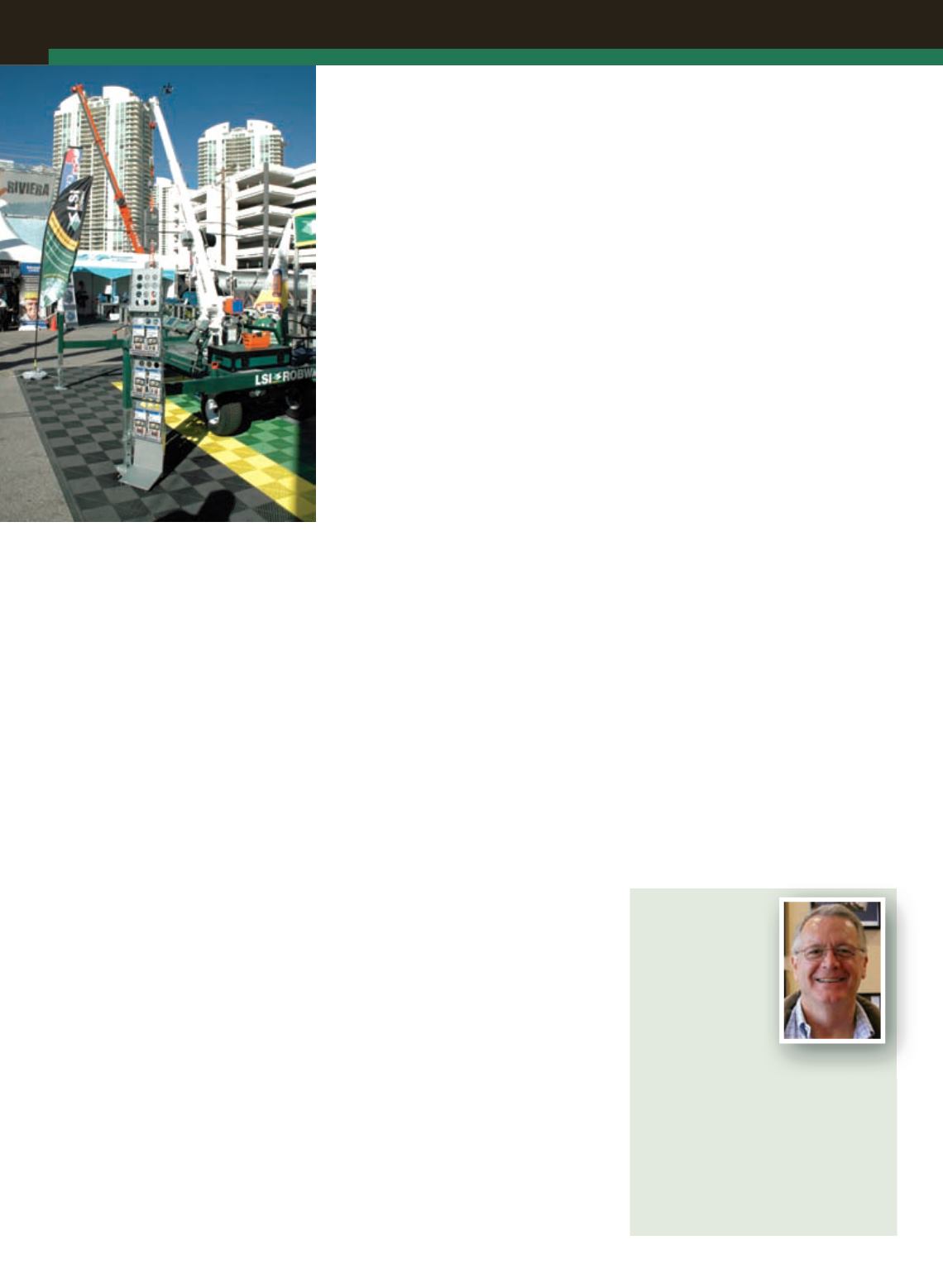
44
TECHNOLOGYUPDATE
TELEMATICS
ACT
APRIL 2014
collect a vast arrayof information from
enginedata, transmissiondata, LMI
geometry and soon.
Recently, theAssociationof Equipment
Manufacturers andAssociationof
EquipmentManagement Professionals
announced a collaboration thatwill
provide access to19 standarddatapoints
for eachmachine, allowing this data to
easilybedirected into your host system
of choice.
CraneOEMs have been trending to
telematics over recent years.Many
OEMs areproviding systems that are
proprietary to theirmachines. This is
beneficial to theOEMs and to the owner
of those specificmachines. Inmany cases,
withOEM systems you can remotely
monitor location, diagnose crane
issues, productivityparameters, engines
parameters or other conditions. These
features canhelpusers bettermanage
their fleets and interactwithOEM
support needs.
New roll out
At LSI, we are going tobe rollingout a
telematics solution in thenear future.
Our premisewill be slightlydifferent
thanwhat is often seen in themarket
today. As compared tousing a cell card
for the standard transmissionof data,
wewill use our radio architecture to
broadcast data across a jobsite. So, if I
have 100machines on a site, theywill
be able to communicate to thedatabase
without theneed for cell carddata
charges.
Therewill be oneuplink to thehost
databaseusing either anonsite internet
linkor a cellular data link. Theuse of
radio architecturewill keep the cell card
data charges low and can alsoprovide an
effective communication infrastructure
where cell phone coverage is not
available.
For equipment that leaves the jobsite,
theLSI telematics solutionwill switch
over to a cellmodem and allow for over-
the-road coverage. LSI’s radio technology
has two versions: one versionwith4,600
feet of range, and anotherwith a radio
modem that has up to10miles of range.
Data canbeuploaded toour database, a
customer’s database or both.Our product
features a tag system for each fieldof
data, which is open and canbe shared
withoutsidedata infrastructures.
This brings up the “bigbrother”
discussion as towhoowns thedata and
who shouldhave access to thedata. In the
United States, andour litigious society, it
is understandable tohave concerns as to
who should, can andwill have access to
thedata.However, as technology evolves
andour desire tobettermanage the costs
and safetyof our fleets increases, I believe
that to a large extent all partieswill accept
that operational critical datawill need to
be shared.
A core challengewithproprietary
telematics systems today is that they are
closed source, which is to say that they
don’t sharedata. Iwas recently inBrazil
workingwith a large contractor thatwe
dobusinesswith.Hewas expressinghis
frustrationwith the closeddata source
thatmost telematics products feature.
Of the brands of equipment that he
uses, eight feature a telematics product.
Unfortunately, thismeans that hehas
eight separatedatabases that hehas to
peruse through to get thepicture of how
his fleet is doing.
TheAEM andAEMP initiativewill be
awelcome startingbridge tobeing able
to collect andmonitor keydata andbring
it into thehost software of your choice.
It is understandable thatOEMswould
want tokeep coredataproprietary to
their equipment, but as time goes on,
the success of telematics usage, inmy
opinion, will come from anopen source
access tokeydata that is easy to access
and share.
If youwere to look at thedirectionof
At ConExpo in Las Vegas inMarch, LSI
exhibitedmany of its crane instrumentation
devices on amini-crane to demonstrate their
capabilities.
ABOUT
THE
AUTHOR
President and CEO
of Load Systems
International, Inc.,
David H. Smith
has beenmarketing
and selling crane operator aid systems
since 1992. His background includes 35
years of sales, marketing and business
development focused on heavy industrial
product applications. In 1999, he
co-founded LSI, and hasmarketed LSI
products the world over, affording him
a global view of the crane and lifting
market.
telematics five years ago and compare it
towhere it is today, you can see that the
difference is dramatic.
Today, products are coming into the
marketwhere auser candial into the
display inside the operator’s cab and see
the samedata that the operator sees.
From there, theperson that has logged
in remotely canperformdiagnostics and
support. In addition, telematics is being
integrated from all directions. Businesses
with softwareplatforms andhardware
providers are both turning to telematics.
Thedriving force is information
access, product support and liability
management.
Many benefits
As telematics technology continues
to evolve, onewould expect that
crane ownerswill derive a broadhost
of benefits from this ever-changing
technology. Imagine being able to send
a firmwareupdate to your joystick
controller using telematics. Thiswould
eliminate a costly field service trip, travel
charges andmuchmore. Firmware
updatesmaybe able tobedone as
standard in the futureusing telematics.
Whether youown six cranes or 600
cranes, I am sure that telematics can
play a vital role in themanagement of
your crane and crane support equipment
business. Todaywe are seeing the start
of telematics beingused to communicate
withbilling software to automatically
update a crane’s billing for a job,
fleet dispatch, lift planning, remote
LMImonitoring, fleetmaintenance
monitoring, remote fuelmanagement,
remote sitemonitoring andmore. The
possibilities are endless.
■


